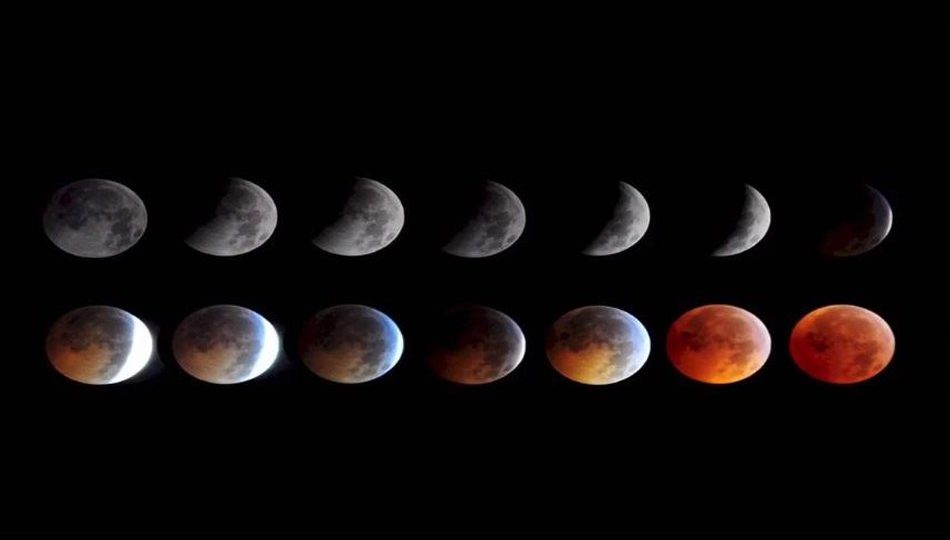Odds are, you’ve probably been seeing this phrase a lot on your social media feed these past few days: “super blue blood moon.” Sounds exciting, doesn’t it? But what’s the hype all about, beyond some possibly really cool snaps on your Instagram Story tonight?
Why is it special?
Basically, it’s a rare combination of a “supermoon,” a time when a full moon appears brighter and larger because it is the closest it can get to earth, a “blue moon,” the second full moon in a month, and total lunar eclipse that turns to moon red or into a “blood moon.”
According to the Philippine Atmospheric, Geophysical and Astronomical Services Administration (PAGASA), the last time the Philippines witnessed a super blue blood moon was 36 years ago.
What’s the best time to see it?
Here in the Philippines, we only get a little more than an hour to see the moon turn from a big ball of Swiss cheese to a red queso de bola. This will be from 8:51pm and 10:07pm.
But if you want the best view, set your alarm to a few minutes before 9:29pm, which will be peak super blue blood moon, or when PAGASA said it will reddest.
Where should you view it from?
For the best view of the moon, PAGASA suggested that you look east. Apart from this, the Philippine Astronomical Society shared on Facebook last week a few places around the country with observations stations you can visit.
https://www.facebook.com/PhilippineAstronomicalSociety/posts/10155117793810933
In Metro Manila, you can go to:
Rizal Park, Luneta, Manila
Host: Philippine Astronomical Society
Time: 6pm – 12am
Note: Open to all, walk-ins allowed
San Beda College, Manila
Host: Bedan Society of Young Astronomers
Time: 6pm – 10pm
Note: Open to all. More details on their Facebook page.
Manila Observatory, Ateneo de Manila University, Quezon City
Host: Philippine Astronomical Society
Time: 6pm – 12am
Note: Can only hold 50 people, registration is already closed.
SM North EDSA, Quezon City
Host: Manila Street Astronomers
Time: 7pm onwards
Note: More details on their Facebook page.
PAGASA Astronomical Observatory UP Diliman, Quezon City
Host: UP Astronomical Society
Time: 6pm – 12:10am
Note: Open to all, walk-ins allowed
TriNoma Park, Quezon City
Host: Cutting Edge TriNoma
Time: 6:30pm – 9pm
Note: More details on their Facebook page.
Pinaglabanan Shrine, San Juan
Host: Manila Street Astronomers
Time: 6pm – 12am
Note: Open to all, walk-ins allowed
Cityland Pasong Tamo, Makati
Host: Philippine Astronomical Society
Time: 7:30pm – 10:30pm
Note: Open to all, walk-ins allowed
The Nest Food and Lifestyle Park, Taguig
Host: Philippine Astronomical Society
Time: 7:30pm – 11pm
Note: Open to all, walk-ins allowed
SM by the Bay Central Park, SM Mall of Asia, Pasay
Host: Astronomical League Of The Philippines, Inc.
Time: 6pm – 12am
Note: Open to all, walk-ins allowed
Alabang Town Center, Muntinlupa
Host: Manila Street Astronomers
Time: 6pm – 12am
Note: Open to all, walk-ins allowed
Don’t forget to tag us on Instagram @coconutsmanila in your photos tonight!
If you’re in other cities around Southeast Asia right now, here’s information on where and what time you can watch the super blood moon from where you are:





Reader Interactions